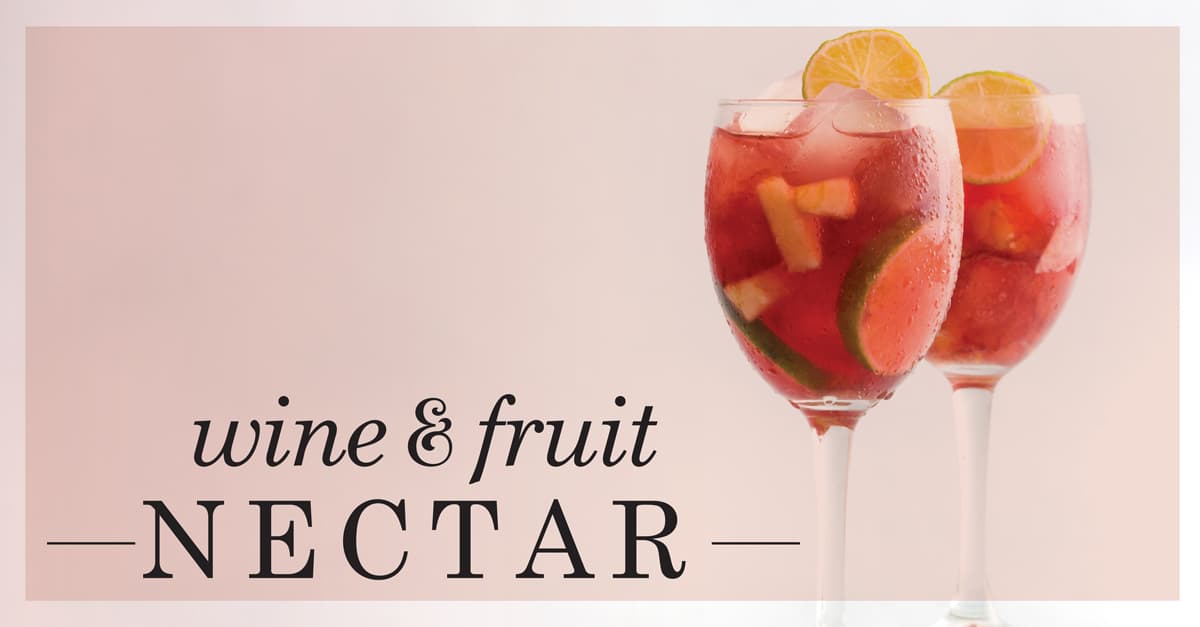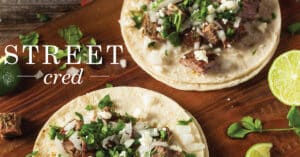Wine & Fruit Nectar
Simple Spanish Sangria…
We Live in an age of pre-packaged wine spritzers, wine coolers, flavored malt beverages and other fruity adult beverages. Just walk down the beer aisle in your local supermarket or attend a neighborhood pool party and you will see all sorts of store- bought cans and bottles of the sweet, tangy concoction of alcohol mixed with fruit.
Back in the early 1980s, brands such as California Cooler and Bartles & James (owned by Gallo) introduced Americans to this new wine-based category. Soon, malt liquor-based drinks made by Seagrams, Smirnoff and Zima took over.
What do all of these beverages have in common? They all tried to mimic the classic sangria, a delicious wine-and-fruit nectar that was first quaffed by Romans around 200 B.C. But I am here to tell you that today’s packaged drinks are a poor imitation of the age-old sangria.
Romans imbibed “hippocras,” wine mixed with sugar and spices. The Phoenicians brought the recipe to Spain and the Spaniards perfected the recipe. Sangria — which is derived from the word “sangre,” the Spanish word for blood in reference to the red wine used — was all the rage on the Iberian Peninsula in the 1500s.
Americans have enjoyed drinking sangria since the 1700s, but it became a national trend in 1964 after the World’s Fair in New York City. Spain’s sponsored pavilion featured the drink, and Americans have been thirsty for sangria ever since.
Since the beginning, what made sangria so popular was that no two recipes were the same. Depending on the region, different fruits and different varietals of wine are used. Sangrias can be sugary sweet, bittersweet, spicy, herbal or botanical – all depending on the availability of ingredients and the desires of those who make it.
Sangrias are delicious no matter the time of year, but late summer and early fall are excellent seasons to make and share the festive drink.
The recipe below features apples and oranges, but nearly every fruit can join the sangria party. I’ve used peaches, pineapples, strawberries, grapes, blackberries, mangoes and kiwifruit. I’ve typically used Spanish varietals such as tempranillo or garnacha. Pinot noirs or zinfandels are also excellent choices. Some recipes call for white wines such as pinot gris or sauvignon blanc. •

SIMPLE SPANISH SANGRIA
Servings: 4 cups
Prep Time: 5 minutes
Total Time: 5 minutes
INGREDIENTS
- 1 lemon, cut in quarters
- 1⁄2 medium apple (cored, skin on, chopped into small pieces)
- 1⁄2 medium orange (rind on, sliced into small pieces, large seeds removed)
- 3T brown sugar or cane sugar
- 3⁄4 cup orange juice
- 1⁄4 cup brandy(optional, but highly recommended!)
- 1 bottle dry red wine(Spanish wine preferred)
- 1-2 cups ice to chill
- Splash of tonic water(optional)
INSTRUCTIONS
Step 1: Place lemon, apple, orange and sugar in a large pitcher and muddle with a muddler or wooden spoon for about 1 minute.
Step 2: Add orange juice and brandy and muddle again for 30 seconds.
Step 3: Pour in red wine and stir. Taste and adjust flavor as needed.
Step 4: Add ice and stir to chill. Serve as is, or with a bit more ice. Garnish with orange segments (optional).
Step 5: When pouring the sangria into a glass with ice, leave a little room for a splash of tonic water (optional). This will give a little effervescence to the drink.
NOTE: Sangria is always better when freshly made, but you can double the batch and store leftover Sangria covered in the refrigerator for a few days. You can also pour into ice trays and freeze.




